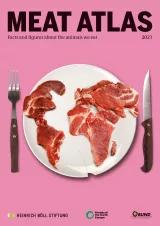
As part of its Green Deal, the European Commission has proposed a “Farm to Fork Strategy”. This is the EU’s most coherent attempt yet to respond to the fundamental challenges plaguing the food system. But much will depend on converting highgrand-sounding words into actual policies.

Announced in 2019, the European Green Deal is a set of policy initiatives by the European Commission to make the European Union the world’s first “climate-neutral bloc” by 2050, and to tackle other environment-related challenges. In May 2020, as part of the Green Deal, the Commission proposed a “Farm to Fork Strategy” for a “fair, healthy and environmentally friendly food system”. This aims to achieve a range of goals by 2030: cut the overall use and risk of chemical pesticides by 50 percent, farm 25 percent of the EU’s agricultural land organically, reduce nutrient losses (especially of nitrogen and phosphorus) by at least half, lower the use of fertilizers by 20 percent, and halve per capita food waste at retail and consumer levels.
Farm to Fork also addresses the livestock sector. It aims to reduce the contribution of livestock to climate change, limit biodiversity loss and pollution, lower the use of antibiotics, and increase animal welfare. The Commission wants to reduce the EU’s dependency on imported feed, such as soybeans grown on deforested land. It aims to do this by promoting plant proteins grown in Europe, as well as alternative feeds such as insects, algae and byproducts from the bio-economy. Other measures include enforcing environmental rules and addressing nutrient pollution. Antimicrobial resistance linked to the excessive and inappropriate use of antibiotics in animal and human healthcare leads to an estimated 33,000 human deaths in the EU every year. To avoid this, the Commission wants to halve sales of antimicrobials for livestock and in aquaculture by 2030. It is considering revising animal welfare legislation and rules on animal transport and slaughter, and introducing product labels for animal welfare.
Current meat consumption patterns in Europe are unsustainable in terms of both health and the environment. Average intakes of red meat exceed World Health Organization recommendations, while consumption of whole-grain cereals, fruit and vegetables, legumes and nuts is too low. The Farm to Fork Strategy wants to change consumption through information, improved availability and prices, and tax incentives.
Despite these measures, civil society organizations criticize the Farm to Fork Strategy as insufficient to solve the problems of industrial animal farming and consumption. They say it only makes minor tweaks to the current, unsustainable system.
Plus, policies that conflict with parts of the Farm to Fork Strategy are still in place. Between 18 and 20 percent of payments under the EU’s Common Agricultural Policy go to livestock farms or farms that produce animal fodder, which supports the concentration of meat and dairy production in fewer and larger farms. The next funding period for the Common Agricultural Policy gives more responsibility to Member States for allocating money, and much will depend on their national strategic plans. But so far, no member country has a dedicated plan to transform the livestock sector and adapt it to the Commission’s climate and biodiversity goals. And plans for integrated nutrient management depend on tools that are not yet part of the regulations.
As the EU attempts to open up new market opportunities for European farmers, a large part of its promotional spending is still directed towards livestock. While most money indeed goes towards promoting organic products and the climate and environmental aspects of the agri-food sector, 138.7 million euros, or 24 percent of the total money used for promotion in 2016–19, was devoted to meat and animal products.
Current trade agreements reflect the strength of the EU’s marriage to industrial livestock. They give high priority to new markets for pork and poultry, as well as imports of cheap feed. Current discussions on the free trade agreement with the Mercosur region illustrate that reaching the Farm to Fork goals will require changes not only in agriculture and food policy, but also in how the EU conducts international trade.
The Farm to Fork Strategy is a document of the European Commission and is not binding. The legislative measures that will come out of the strategy would need to propose concrete ways to contribute to those objectives. Support from national policymakers is vital, but the signals are mixed. In October 2020, the EU agriculture ministers welcomed the strategy but did not commit to working towards its objectives.

